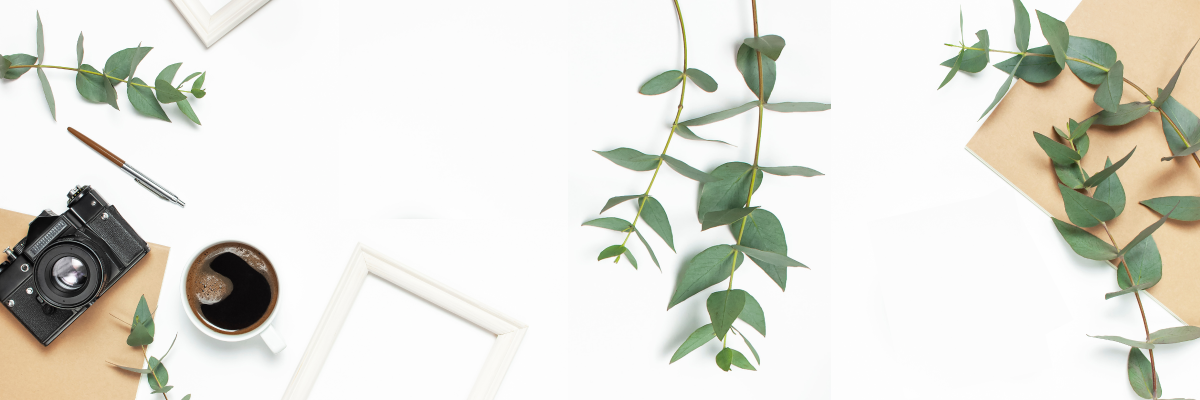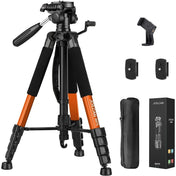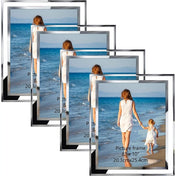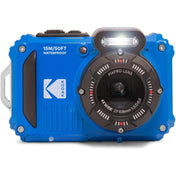Overview
Mastering composition in photography is essential for creating stunning images. Key techniques include the Rule of Thirds, leading lines, framing, balance, depth, color and contrast, and negative space. Using these principles can enhance your skills and storytelling in photography. Continuous practice and experimentation are crucial for growth. Invest in good equipment, like a lightweight tripod, to improve stability and creative opportunities. Embrace composition to unlock your artistic potential.
Photography isn't just about capturing a moment; it's about crafting art through the lens. Among the myriad factors that contribute to stunning photography, composition reigns supreme. Understanding and applying the principles of composition can transform average shots into breathtaking images. In this blog post, we delve into the significance of composition in photography and how it can enhance your skills, enrich your portfolio, and ultimately, resonate with your audience. Whether you're a budding photographer or a seasoned professional, mastering composition is key to success.
What is Composition in Photography?
Composition is the arrangement of visual elements within a photograph. It involves the placement of subjects, backgrounds, and other elements in a way that engages the viewer and leads the eye through the image. Good composition can evoke emotions, create narratives, and tell stories. As a fundamental aspect of photography, it’s essential to grasp the basics of composition to produce visually striking images.
The Rule of Thirds: A Starting Point for Beginners
One of the most widely recognized principles of composition is the Rule of Thirds. This rule suggests dividing your frame into nine equal segments using two vertical and two horizontal lines, creating a tic-tac-toe grid on your viewfinder. The idea is to position your main subject along these lines or at their intersections, enhancing balance and making your photos more dynamic.
Applying the Rule of Thirds
- Find your focal point: Look for elements in your scene that naturally draw the eye, such as a striking landscape or a vibrant flower.
- Align accordingly: Position your subject along one of the grid lines or at an intersection to create a more engaging composition.
- Experiment: While the Rule of Thirds serves as a great guideline, don’t hesitate to break it if another composition feels right to you!
Leading Lines: Directing the Viewer’s Gaze
Leading lines are another powerful compositional technique. These are lines within the image that lead the viewer’s eye towards the main subject or into the photo. They can take the form of roads, rivers, fences, or even shadows. By using leading lines, you can create depth and dimension in your images.
Creating Effective Leading Lines
- Identify natural lines: Look for elements in your environment that create lines, such as pathways, bridges, or railings.
- Angle your shot: Consider the angle from which you are shooting to maximize the potential of these leading lines.
- Focus on depth: Use lines that lead from the foreground into the background to add dimension to your composition.
Framing: Focusing Attention
Framing is a technique that involves using elements within the scene to create a "frame" around your subject. This technique helps to isolate your subject, draws attention to it, and adds a layer of depth to your photo. Natural frames could include anything from overhanging trees to arches, doorways, or windows.
How to Utilize Framing
- Search for structures: Look for architectural or natural elements that can serve as frames for your subject.
- Experiment with angles: Move around to find the best angle that utilizes these framing elements effectively.
- Consider your background: Make sure that your frame doesn't distract from the subject, but rather enhances it.
Balance: Achieving Harmony in Your Shots
Balance in photography refers to the distribution of visual weight in an image. A well-balanced composition often feels more harmonious and aesthetically pleasing. You can achieve balance through symmetry, asymmetry, or by distributing visual elements evenly across the frame.
Exploring Different Types of Balance
- Symmetrical balance: This involves placing equal visual weight on both sides of the image, creating a sense of order and stability.
- Asymmetrical balance: With asymmetry, you can create interest by placing differing visual weights that still balance out.
- Radial balance: This form radiates from a central point, directing the viewer's eye inward.
Depth: Creating a Sense of Dimension
To make photos more immersive, incorporating depth into your compositions is vital. Depth can be achieved through various techniques such as layering, perspective, and focus. By incorporating foreground, middle ground, and background elements, photographers can provide viewers with a sense of being present in the scene.
Methods to Enhance Depth
- Utilize foreground elements: Include objects in the foreground to create layers within your image.
- Use leading lines: As mentioned earlier, these can help direct the viewer’s focus into the image, enhancing the sensation of depth.
- Vary your focus: Use a shallow depth of field to blur backgrounds and accentuate your subject, or include everything in focus for a more expansive scene.
Color and Contrast: Evoking Emotions
Color and contrast significantly influence the mood and impact of a photograph. Warm tones can evoke feelings of joy and energy, while cool tones often communicate calm and serenity. Utilizing contrast—between light and shadow, colors, or textures—can create a striking visual narrative and enhance the overall composition.
Working with Color and Contrast
- Select a color palette: Choose colors that complement each other to enhance unity in your composition.
- Play with light: Ensure that your scenes have enough contrast to highlight your subject effectively.
- Incorporate shadows and highlights: Use these elements to add drama and intricacy to your images.
Negative Space: The Power of Simplicity
Negative space refers to the empty or unoccupied space around the subject of an image. Utilizing negative space can emphasize your main subject, create balance, and lead the viewer’s eye. It’s a powerful tool for simplifying complex scenes, allowing your subject to stand out and resonating with viewers.
Employing Negative Space Effectively
- Choose your subject wisely: Make sure your subject is clear and identifiable, even within a vast backdrop.
- Experiment with composition: Leave significant portions of space empty to let your subject breathe.
- Enhance storytelling: Negative space can convey emotions, drawing the viewer into your visual narrative.
Adapting to Your Environment: The Role of Equipment
No discussion of photography is complete without mentioning the gear that aids us in capturing stunning images. Your choice of equipment affects how you compose your shots, especially when considering elements like stability and perspective. Investing in a Lightweight Tripod can enhance your composition by allowing for more precise control over your angles and exposures. It stabilizes your camera, facilitating long exposures and low-light shots without the risk of blurriness.
Benefits of Using a Lightweight Tripod
- Enhanced stability: Achieve sharper images, especially in challenging lighting conditions.
- Mobile design: Easy to carry around for outdoor photography, ensuring you never miss a moment.
- Versatility: A good tripod can accommodate different shooting angles and perspectives, enhancing creative opportunities.
Practice Makes Perfect: Transforming Your Skills
Understanding composition and its elements is just the beginning. To truly master photography, continuous practice is essential. Experiment with different styles, techniques, and concepts to discover what resonates most with you and your creativity. Review your work critically, seek feedback, and don't shy away from learning from mistakes. Each shot is an opportunity to refine your skills.
Tips for Effective Practice
- Challenge yourself: Set specific goals for each photoshoot, whether it’s mastering leading lines or incorporating negative space.
- Take your time: Allow yourself the opportunity to set up shots with thoughtful composition rather than rushing.
- Learn from the masters: Study the work of renowned photographers to understand and appreciate different compositional techniques.
Igniting Your Creative Spark
Understanding the importance of composition in photography can unleash your full creative potential. By experimenting with elements like the Rule of Thirds, leading lines, balance, and employing a Lightweight Tripod, you can create compelling images that stand out and resonate with your audience. Compose with intention, and watch as your photography evolves into a form of visual storytelling that captivates and enthralls. The world is your canvas—get out there and start composing!
Linked Product

Kodak PhotoGear 62" Lightweight Tripod with Monopod
The Kodak PhotoGear 62" Lightweight Tripod with Monopod is designed for versatility, making it suitable for various photography scenarios, from vlogging to self-portraits. Its lightweight design and compact size enhance portability, while the built-in bubble level and rubber feet ensure stability on different surfaces. The included Bluetooth remote and quick-release plates add convenience, making it easier to capture the perfect shot.
View Product










